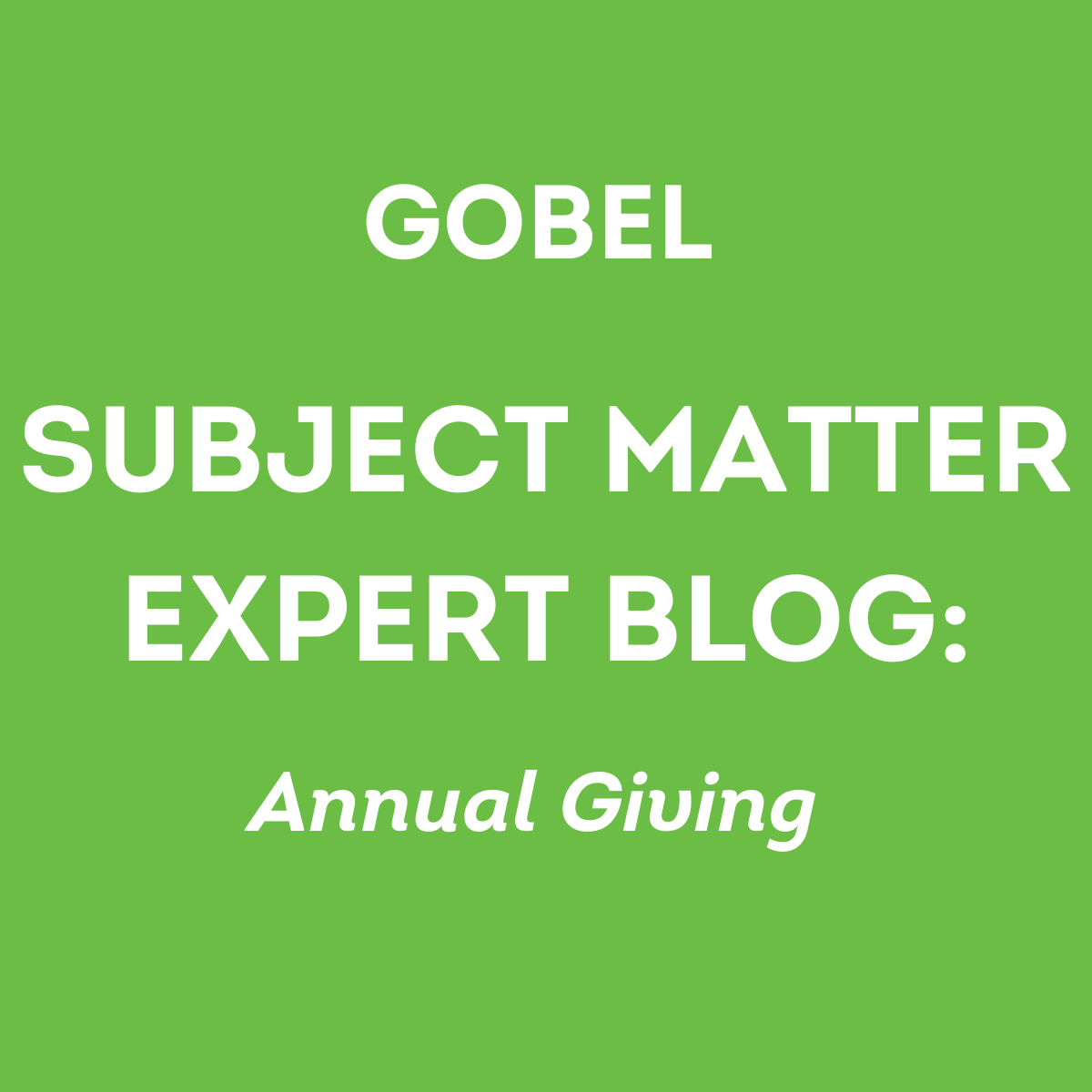
GOBEL Subject Matter Expert Blog: Best Practices in Leadership Annual Giving
By Ann Fisher
Director of Annual Giving, Leadership Annual Giving and Data Services, Michigan Medicine
As I mentioned in a previous blog, leadership annual giving plays an integral role to the long-term success of any non-profit organization. Most of your major-gift and planned-gift donors of tomorrow will be found in your leadership annual giving levels of today. What you do to cultivate these donors now will have a significant impact on your organization’s major- and planned-gifts programs for years to come.
So, what should you be doing in leadership annual giving to ensure you are doing your best to build a base of support for the future? In the next few paragraphs, I break down what I consider the essential best practices for leadership annual giving. Focusing on these four key components will ensure a successful leadership annual giving program for your organization.
Analyze your base. It is important to understand what types of donors comprise your leadership annual giving program. I like to think of these donors falling into four broad buckets: special givers, occasional donors, loyal supporters, and the rising contributors.
-Special givers are those who make a one-time gift and do not plan to give at that level again.
-Occasional donors may not give at leadership level every year, depending on financial reasons or interest level.
-Loyal supporters are giving at this level consistently most years, but may not be able to become major donors.
-Rising contributors are those who have the interest and the capacity to become major gift donors.
Understanding these distinct categories is important because you cannot and should not spend the same amount of time on all four types of donors. With so many leadership annual giving donors to manage, it is important to be strategic about your time, so you are giving the donors with the most potential the attention they need to move more quickly through the pipeline. As hard as it can be, you need to disqualify those special donors, give loyal supporters the attention they deserve — because they might become planned-gift donors — but know that most of your energy should be focused on the few that have both potential and inclination to move to major gifts.
Be patient. I often hear the same refrain from leadership annual giving officers: “I have called and left messages and the donor won’t respond.” This is often followed by the question of whether the donor should be removed from their lists. Donors, particularly those at the early levels of leadership annual giving, are not as likely to pick up the phone or accept a visit right away. Even if you do not have personal contact with them, as long as they are still giving, you should leave them on the list for at least a two- or three-year cycle. It is important for you to remember you operate on their schedule, and they will determine the time when they are ready to connect with you.
Maintain consistent contact. Beyond the annual ask, it is important to have strategies for engaging these donors if you want to grow the connection they have with the organization. Look for opportunities to connect with the donor, and to connect the donor to the mission of your organization. Send them articles or newsletters that might be of interest to them. Provide them updates about exciting things that are happening at your organization. Invite them to events or activities where they can engage and learn more. Call and thank them when you receive their gift. Every contact you make with them is another brick in a foundation of their relationship with your organization.
Use all your tools. Visits are obviously the best way to engage donors because they are the most personal form of contact, with phone being your next best option, and email, text, and mail further down the list of personal contact. However, it is important to recognize that you will need all these tools to be successful, particularly when you are trying to engage a donor at this level for the first time. After you get to know the donor better, determine which means of communication they prefer to use and stick to those. But until you know them, do not shy away of using all the tools in your tool kit to try to engage them.
If you keep these four best practices in mind, you will open the pipeline wide so that donors can flow more quickly and easily into major gift or planned gift donors to your organization.
ABOUT GOBEL SUBJECT MATTER EXPERTS: GOBEL Subject Matter Experts are healthcare philanthropy professionals working in some of the top shops in the country, sharing best practices and insights. For more information about GOBEL’s Subject Matter Expert program, or to suggest a topic for coverage, email erezsnyak@gobelgroup.com.
ABOUT THE AUTHOR: Ann Fisher is a fundraising professional with more than 25 years of experience in annual giving. Ann began her career at Hospice of Michigan where she developed numerous skills from data base management to grant and appeals writing. From there she moved on to University of Detroit Mercy where she spend nearly 20 years in annual giving, eventually becoming their Executive Director of Annual Giving and Data Services. During her time at Detroit Mercy, Ann was instrumental in introducing new initiatives like online giving and crowdfunding while also improving the ROI in phone and mail and coordinating the University’s President’s Cabinet leadership giving program. Ann then spent two years at UC San Diego as Senior Director of Integrated Marketing, where she launched their first Day of Giving and restarted their grateful patient giving program. Ann currently works at Michigan Medicine where she serves as Director of Annual Giving, Leadership Annual Giving and Data Services. In 2021 Ann and her colleagues were selected as CASE Platinum Award Finalists in the Best Practices in Fundraising Award for their Nurses Week Campaign, which raised over $80,000 from 1,300 donors during the height of the pandemic. She has also served as a judge for the CASE Circle of Excellence Awards. In her spare time, Ann is an avid runner and has run several half and full marathons as a charity runner to raise money for various causes.

